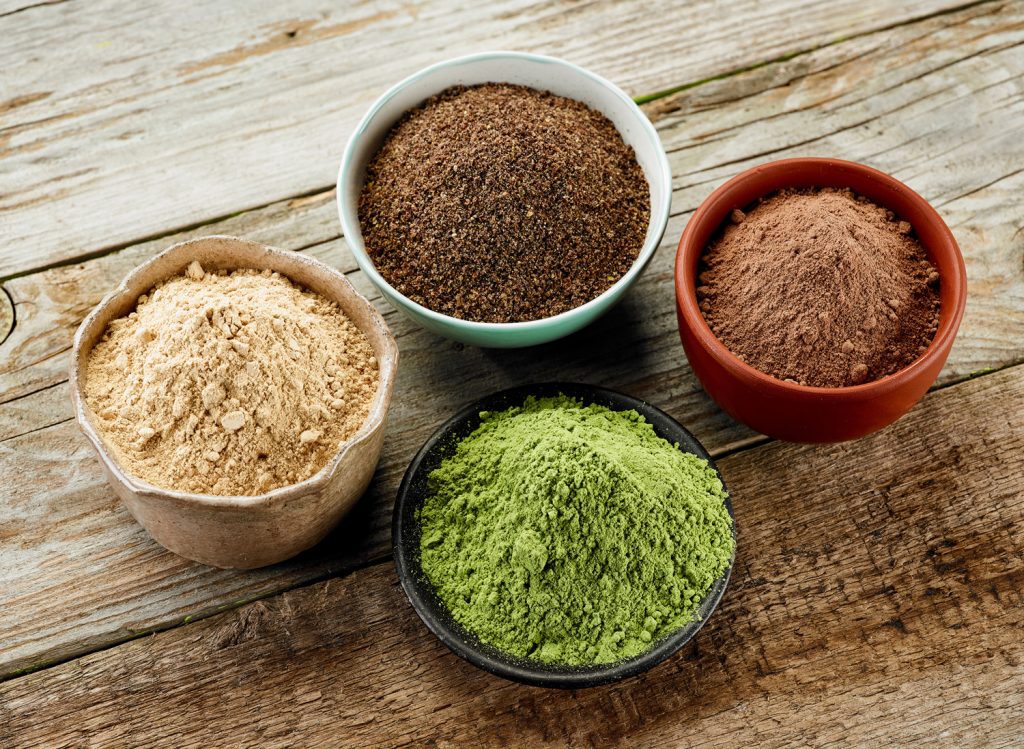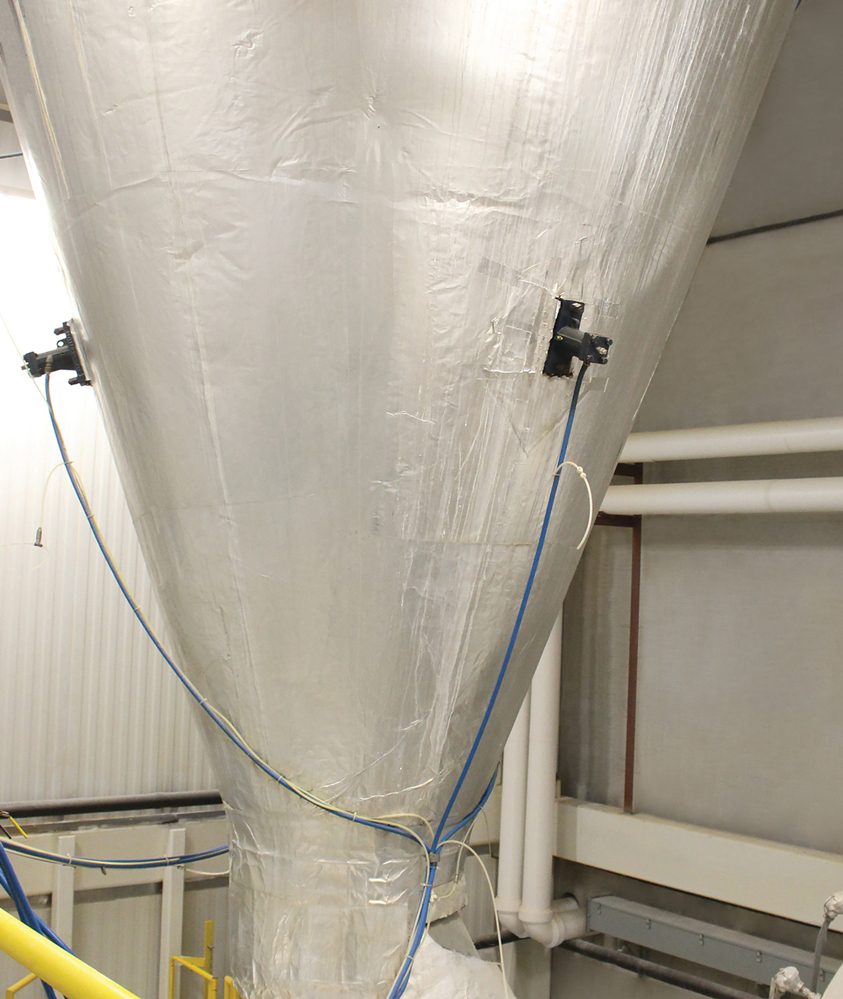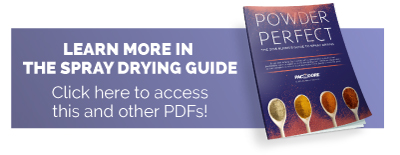
What exactly is spray drying, and how do spray dryers work? Simply put, the spray drying process involves turning liquid into various forms of powder. Here, we’ll discuss the basics of spray dryer technology.
Anatomy of a Spray Dryer
Many different types of spray dryers exist, each with different features for meeting various spray drying needs. Spray dryers are used for food products (ie. starch, corn syrup, molasses, honey, dairy), chemicals, pharmaceuticals, and even food ingredients you wouldn’t expect, like algae. The basic parts of a spray dryer include:
 feed pump
feed pump- atomizer or spray nozzles
- air heater, air disperser
- drying chamber
- powder recovery systems
- process control systems
- Click here to learn the specifications of PacMoore’s spray dryers.
The Stages of Spray Drying
The spray drying process begins with atomization. During atomization, a nozzle or rotary atomizer turns the liquid feed stock into small liquid droplets. It is during this stage that many of the desired product qualities (ie. particle size, viscosity) are developed.
The drying process is next. After the droplets exit the nozzles or atomizer, they need to be dried to form a powder that can be easily packed and transported. Drying of the powder is commonly completed using hot air that is heated with natural gas. Final moisture of the powder is controlled by adjusting the hot air temperature.
The recovery process is last and takes just a few seconds to recover the powder from the exhaust gas, by way of a bag filter or cyclone.
Why Choose PacMoore
At PacMoore, we have the spray drying equipment and expertise, as well as a strong commitment to quality. PacMoore offers a GEA FSD 4.0 pilot spray dryer and an 18 foot GEA designed full scale dryer, both at our Mooresville, Indiana facility. We also have a relationships with Purdue University where we have access to bench top spray drying equipment. At PacMoore we pride ourselves on taking on difficult applications and honing the process until our customers are delighted. Click here to learn about the other services we offer in addition to spray drying; including blending, extrusion, consumer packaging, and more. Or contact us to begin discussing your project’s details.
This blog has been revised and updated on 8/1/18 after its original publish date of 8/27/2012.
Share this on Facebook, Twitter, LinkedIn, Google Plus, or email to a friend.
Click below to share:





